e-mail:capr@hiroshima-u.ac.jp
(Please replace @ with half-width characters)
The Centre has been utilising the results of the National Student Survey as part of its IR reports to grasp the current state of educational activities at Hiroshima University (see: Student Success Unveiled & Internationality as the major educational identity of Hiroshima University). As before, we have analysed and reported what kind of learning experiences students have, and what learning outcomes they feel, using the results of the National Student Survey. From these results, we have achieved some pedagogical insights regarding what kind of learning experiences provided to students could increase their learning outcomes (see reference materials at bottom of page (in Japanese)).
This report summarises the results of equivalent items used in the 2nd (2021 academic year) and 3rd (2022 academic year) surveys. The present report presents results obtained through a series of correlation analysis. Correlational analysis suggests the extent to which the values of two elements move in the same way, i.e. whether they increase or decrease together (“1” indicates a strong positive correlation while “-1” indicates a strong negative correlation). However, it should be noted that demonstrating a correlation does not prove a direct causal relationship.
Looking at the results of the 2nd and 3rd surveys, students who felt the importance of course contents was explained sufficiently (Q4 [see reference materials]) tended to respond particularly positively regarding their university educational experiences and recognise their self-development.
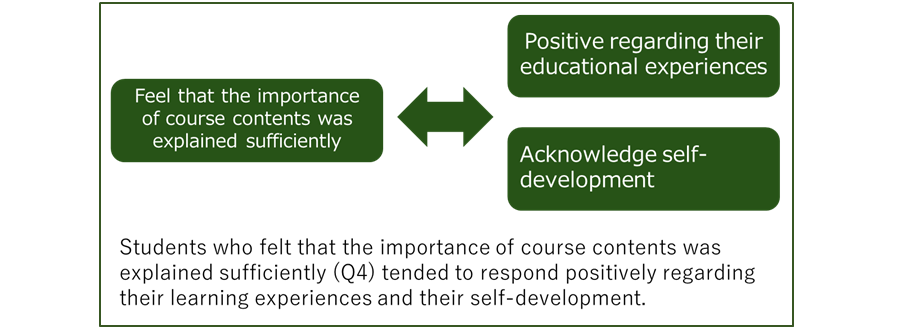
Furthermore, students who felt appropriate comments were provided on their submitted work (Q10) tended to feel instructors made efforts to ‘face’ students (2nd survey Q42, 3rd survey Q37). In addition, when students had opportunities to ask questions and share their ideas (2nd survey Q12, 3rd survey Q8), they tended to feel instructors made efforts to ‘face’ students (Q42).
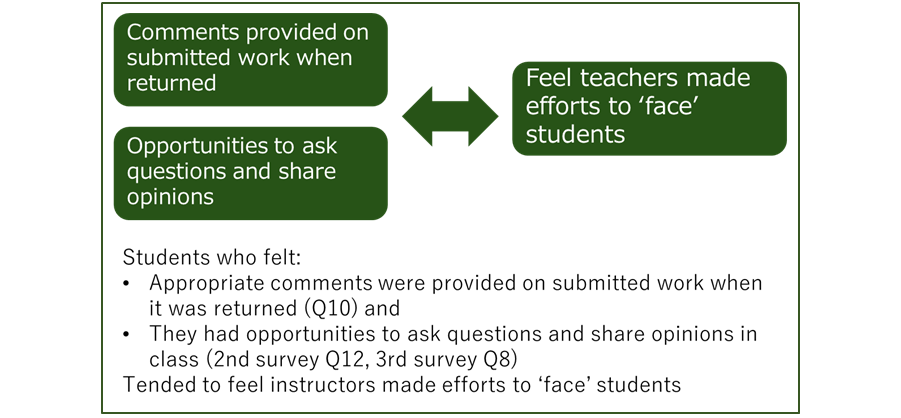
On the other hand, in the results of the 2nd survey, when instructions about class preparation and reviews were provided in classes or the course outline (Q7), students tended to feel university education had been improving (Q41) and that instructors made efforts to ‘face’ students (Q42). However, this pattern did not clearly emerge in the 3rd survey results. Similarly, in the 2nd survey results, when teaching assistants etc. were allocated to provide supplementary guidance (Q8), students were likely to feel instructors made efforts to face students (Q42). However, in the 3rd survey results, this trend could not be clearly indicated. Reasons for this cannot be determined from this survey, but changes in class formats due to the COVID-19 pandemic may be behind it.
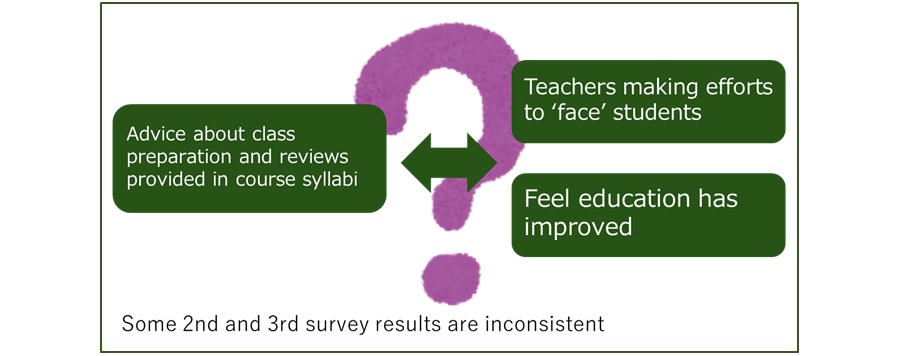
The suggestion obtained from these results is that explaining the significance and importance of course contents may be particularly important for increasing students’ sense of learning. Frequently commenting on the meaning of what students are learning, how it is utilised in daily life, what kind of research potentials it can entail, for example, may make students more aware of significance. This may effectively increase their satisfaction, sense of development, and learning outcomes. Raising instructors’ awareness concerning the significance of course contents is beneficial. Additionally, please note that our analysis revealed no marked differences between science and humanities subjects.
【資料:施行調査の結果一覧のヒートマップ—濃い赤は正の関係が強いことを示す】
第2回施行調査の結果
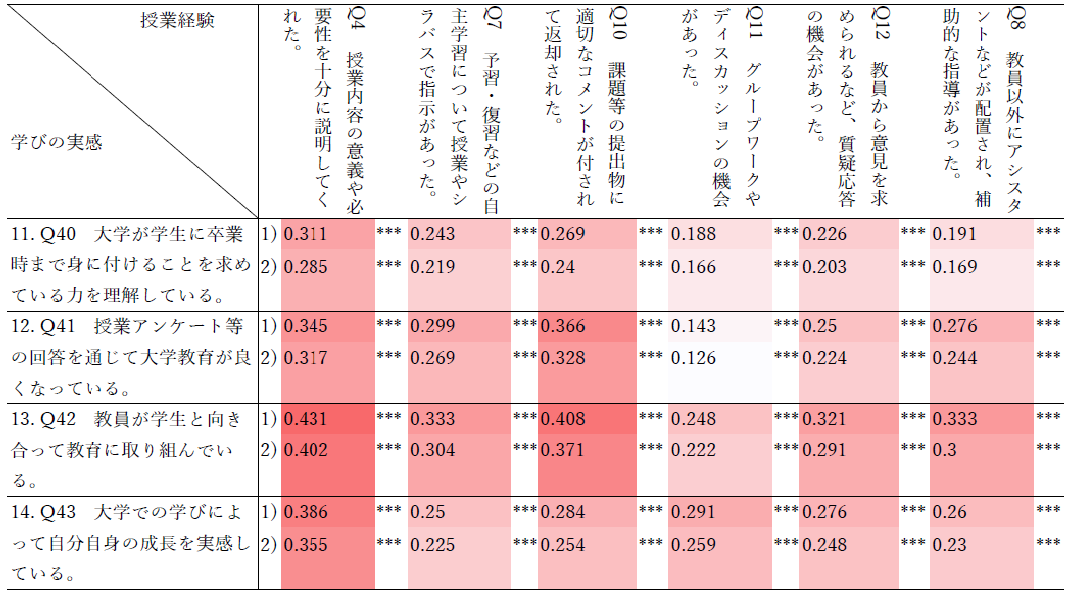
第3回施行調査の結果
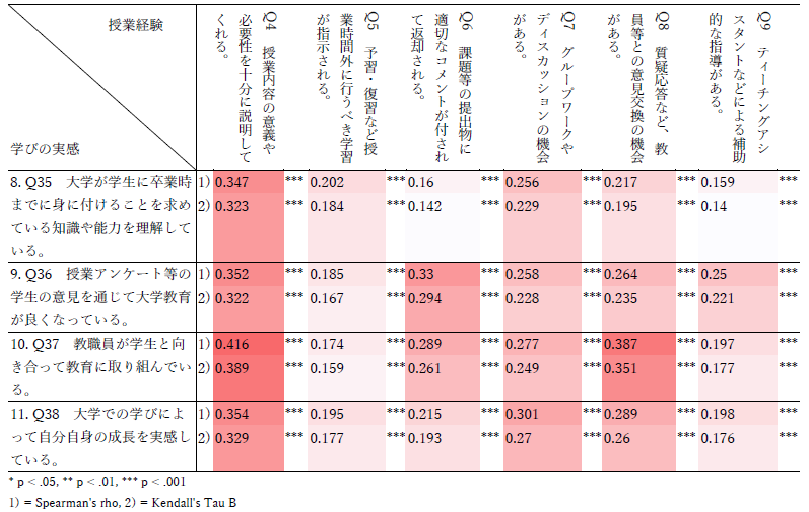
Center for Academic Practice and Resources

 Home
Home